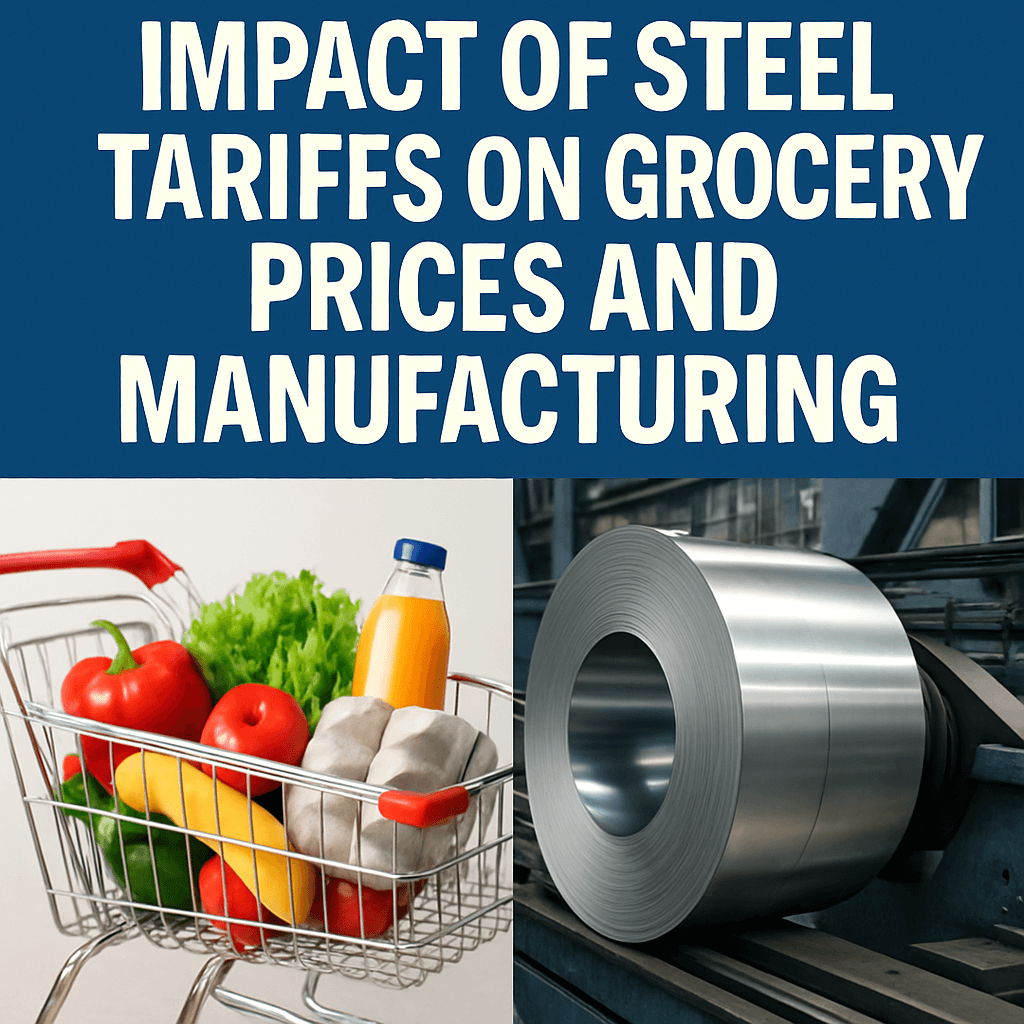Impact of Steel Tariffs on Grocery Prices and Manufacturing

President Donald Trump’s announcement on Friday to double tariffs on foreign steel and aluminum imports has raised concerns that American consumers may experience a rise in grocery prices. The 50% levy on these critical raw materials could set off a chain reaction affecting not only large consumer purchases such as cars and appliances but also everyday items found in grocery aisles.
Ripple Effects Across Consumer Goods
The abundance of steel and aluminum in various consumer products means that these tariffs carry significant implications for the average American. According to Usha Haley, a trade expert and professor at Wichita State University, the increased costs associated with these tariffs are likely to ripple through a multitude of sectors, amplifying price hikes on food items ranging from canned goods and beverages to frozen foods and beyond.
Impact on Grocery Prices
Items impacted by the new tariffs will likely include popular products such as canned soups, beverages, aluminum foil, and even pet foods. With the cost of production rising, food manufacturers are already bracing for the financial consequences. The Campbell Soup Company has indicated that it is evaluating the potential for price increases in response to the tariffs, and ConAgra Brands has also expressed concerns about the impact on its products, which include widely recognizable items like Reddi-Whip and Pam cooking spray.
- Canned foods like tuna and chicken broth
- Soda and beer packaging
- Packaging materials for takeout and delivery food
Domestic Manufacturing Strain and Supply Chain Concerns
With domestic production of tin mill steel significantly dwindling, manufacturers are increasingly reliant on imported materials. Robert Budway, president of the Can Manufacturers Institute, has noted that higher tariffs will directly translate to increased costs passed on to American families. Historically, the domestic capacity for steel used in canning has been sporadic, prompting companies to rely heavily on imports.
Cost Increases in Other Critical Areas
The repercussions of tariff hikes extend beyond just grocery prices. As Babak Hafezi, an international business expert, points out, higher costs for major agricultural equipment—like tractors—will ultimately trickle down to consumers. A purported 25% increase in the price of essential farm machinery not only affects farmers but also contributes to inflation in food prices across the board.
This situation creates a cascading effect that underscores the interconnectedness of the U.S. economy. Potential increases in transportation costs for food products due to higher fuel prices (often influenced by tariffs on oil and steel) can further complicate price stability in grocery stores.
Political and Economic Ramifications
The timing of Trump’s latest tariff announcement has left many speculating about the broader economic strategy heading into the upcoming elections. At a rally in Pittsburgh, Trump emphasized that the goals of these tariffs are centered around securing American jobs in the steel industry. Although the steel sector may see short-term job growth, experts warn that this could be offset by job losses in other areas heavily dependent on steel and aluminum.
The View from Economists
Many economists, including Andreas Waldkirch of Colby College, assert that the overall economic benefit of tariffs tends to favor a narrow set of industries while imposing broader costs on consumers and other sectors. “You may get a few more steel jobs, but the indirect costs associated with tariffs could lead to a net negative loss” for the economy.
Conclusion: A Balancing Act
The decision to impose hefty tariffs on steel and aluminum is likely to impact a wide array of consumer goods, particularly grocery items. While the rhetoric from the White House focuses on reviving U.S. manufacturing, the potential consequences for everyday Americans cannot be ignored. As businesses reevaluate their supply chains and pricing strategies, consumers may feel the pinch as they navigate the grocery aisles in the months to come.
“This will not only challenge consumers at the checkout line, but it may further disrupt the fragile balance of our current economic recovery,” says Robert Budway.
In the battle for trade and economics, the outcomes remain to be seen, but it is essential to analyze all the variables involved for a comprehensive understanding of what lies ahead.
Source: fortune